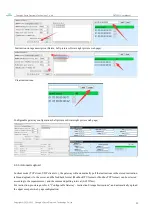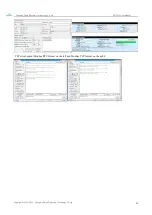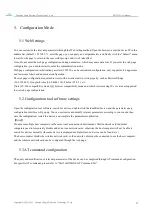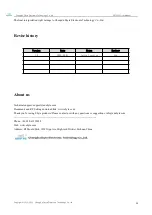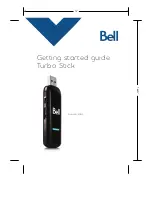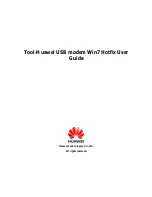
Chengdu Ebyte Electronic Technology Co.,Ltd.
EBT3001 User Manual
Copyright ©2012–2022,Chengdu Ebyte Electronic Technology Co.,Ltd.
14
4.2.2 TCP Client Mode
TCP Client is the TCP client. When the device is working, it will actively initiate a connection request to the server and
establish a connection to realize the interaction between serial port data and server data.
To use the client, you need to configure the target IP address/domain name and target port accurately.
4.2.3 UDP Server Mode
UDP Server means that the device does not verify the IP address of the data source when communicating with the UDP
protocol. After receiving a UDP data packet, it saves the source IP address and source port of the data packet, and sets it
as the destination IP and port, so The data sent by the device only sends data packets to the source IP address and port
where the device received data last time .
This mode is usually used in scenarios where multiple network devices communicate with this device, and the frequency
is high, and the TCP Server cannot meet the conditions.
Using UDP Server requires the remote UDP device to send data first, otherwise the data cannot be sent normally.
[Note] In UDP mode, the data sent by the network to the device should be less than 512Bit per packet, otherwise it will
cause data loss
4.2.4 UDP Client Mode
UDP Client is a connectionless transmission protocol that provides transaction-oriented simple and unreliable
information transmission services. There is no connection establishment and disconnection, and data can be sent to the
other party only by configuring the destination IP and destination port. It is usually used in data transmission scenarios
where there is no requirement for the packet loss rate, the data packets are small and the transmission frequency is fast,
and the data is to be transmitted to the specified IP.
In UDP Client mode, the device will only communicate with the configured (target IP and target port) remote UDP
devices.
In this mode, the target address is set to 255.255.255.255, and the sent data will be broadcast on the entire network
segment, but the transceiver device needs to ensure that the ports are consistent, and the device can also receive broadcast
data.
4.2.5 HTTP Client Mode
This mode can realize the function of HTTP grouping. It provides two modes: GET and POST. Customers can configure
URL, Header and other parameters by themselves, and the device (serial port server) will send packets to realize fast
communication between the serial port device and the HTTP server. In HTTP client mode, it is recommended to use
random ports and enable short connections to save HTTP server resources.


























